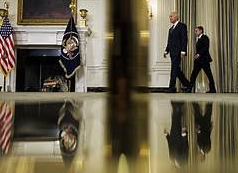In the Middle East, the US has once again confused military might with strategic vision.
As US Secretary of State Antony Blinken concludes his fifth trip to the Middle East since October 7, it is becoming evident that the Biden administration has failed to articulate a comprehensive and cohesive strategy for achieving regional peace and stability. Instead of offering a clear long-term vision, the US has been reactive, using short-term military solutions to manage escalating conflicts without addressing their root causes.
Recently, the US conducted multiple strikes against Iran-backed groups in Iraq and Syria following the deaths of three US troops in Jordan on January 29. Additionally, more strikes were launched on Houthi positions in Yemen. These actions are indicative of the US’s tactical approach, which often focuses on retaliation but lacks a broader strategy to change the dynamics in the region.
However, these military actions have had little lasting impact on Iran’s proxies—Hamas, Hezbollah, and the Houthis—who remain defiant and continue to carry out attacks against US interests, allies, and military assets in the Middle East. The idea that increased military force can solve the region’s deep-rooted problems seems to be a misunderstanding of the true nature of the conflicts.
Simultaneously, attempts to broker a ceasefire in Gaza have stagnated. Negotiations between Israeli and Palestinian leaders remain deadlocked, with both parties holding rigid positions that make any form of compromise difficult. The situation in Gaza is a microcosm of the broader failure of the US to effectively mediate peace in the Middle East.
Beyond the Gaza issue, efforts to normalize relations with Saudi Arabia have also stalled since the October 7 attack. What was once seen as a promising diplomatic breakthrough for the US has now lost its momentum. Saudi Arabia’s reluctance to engage in meaningful dialogue with the US, particularly in relation to the broader Middle East strategy, further highlights the need for a shift in Washington’s approach.
As the US continues to face diminishing support at home for its Middle East policy, the administration must recalibrate its approach. The failure to present a coherent long-term strategy has led to a situation where military actions alone are insufficient to bring about meaningful change. The US needs to move beyond temporary fixes and focus on a strategy that addresses the underlying political, social, and economic issues driving instability in the region.
In order to be effective, the US must take a more nuanced approach—one that recognizes the complexities of the Middle East and the limitations of military power. This requires engaging with all stakeholders, prioritizing diplomacy, and fostering conditions that promote lasting peace and stability. The US’s failure to do so risks further alienating its allies and prolonging the turmoil in a region crucial to global security.

